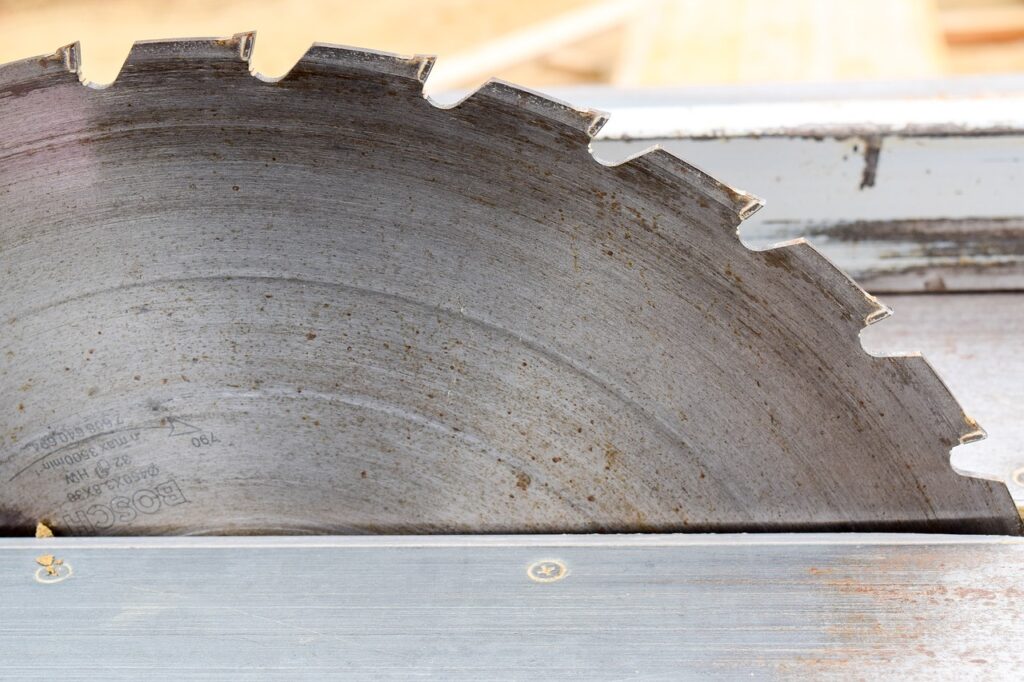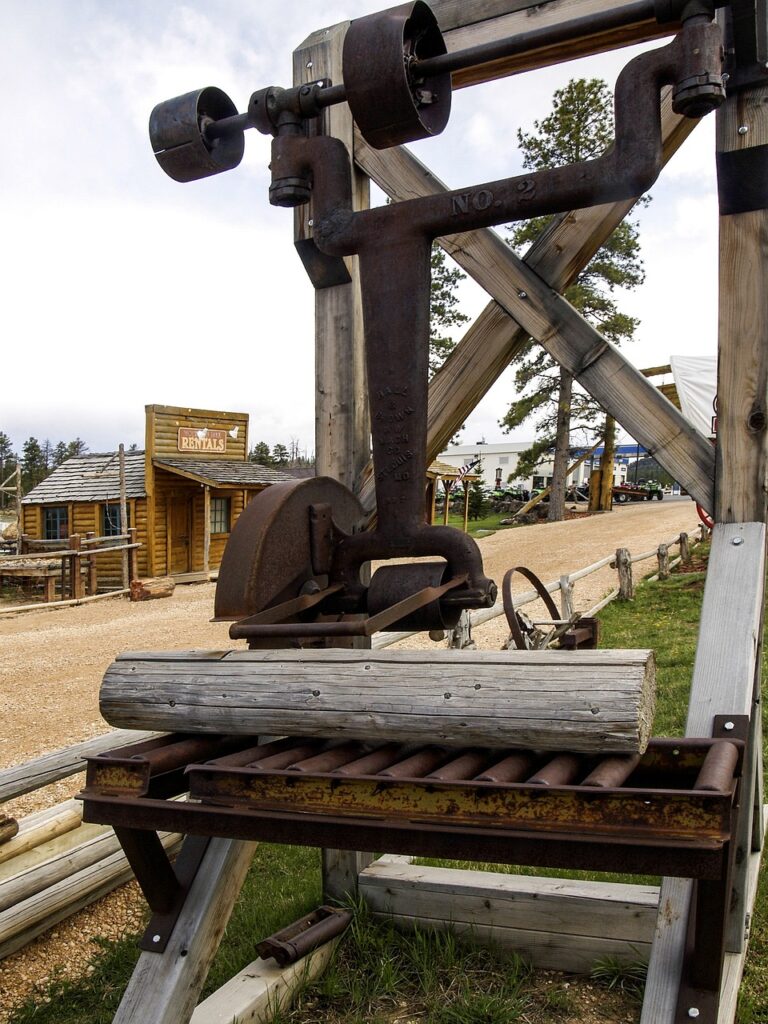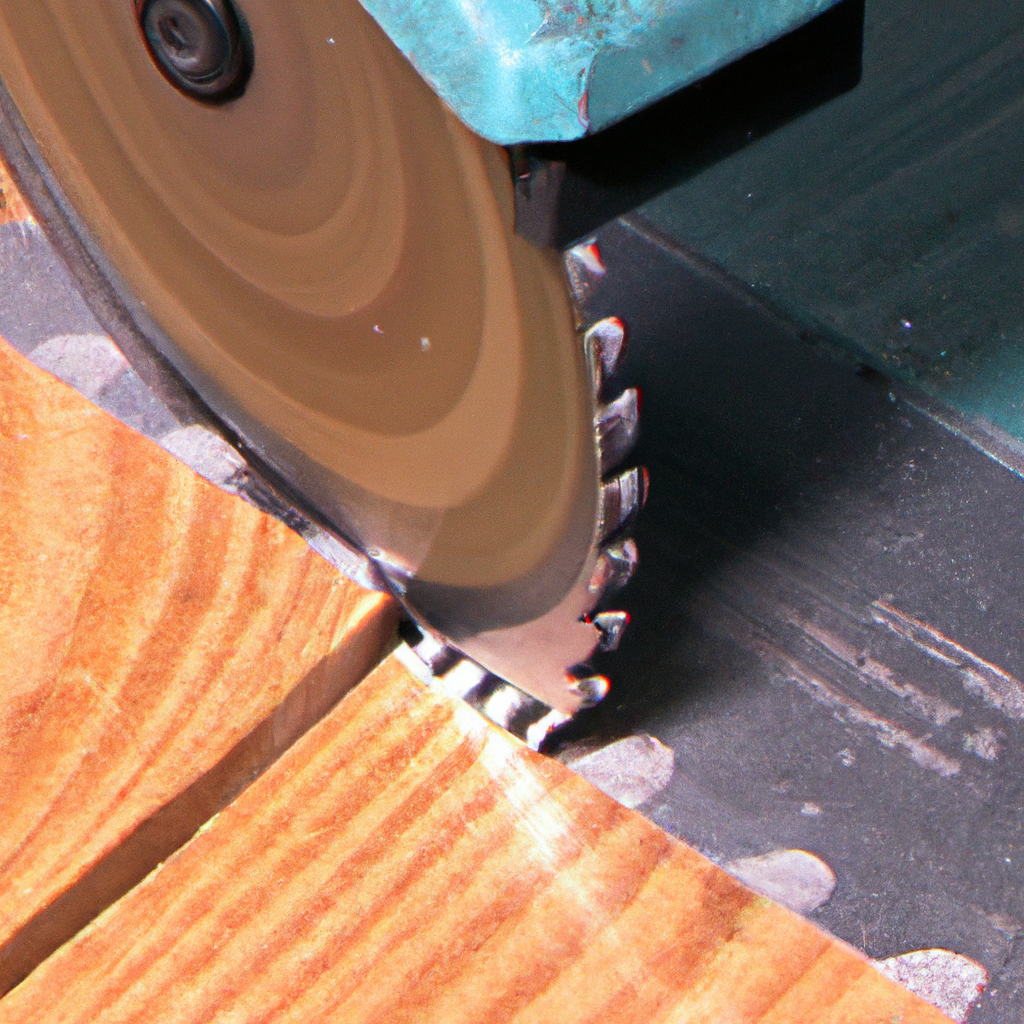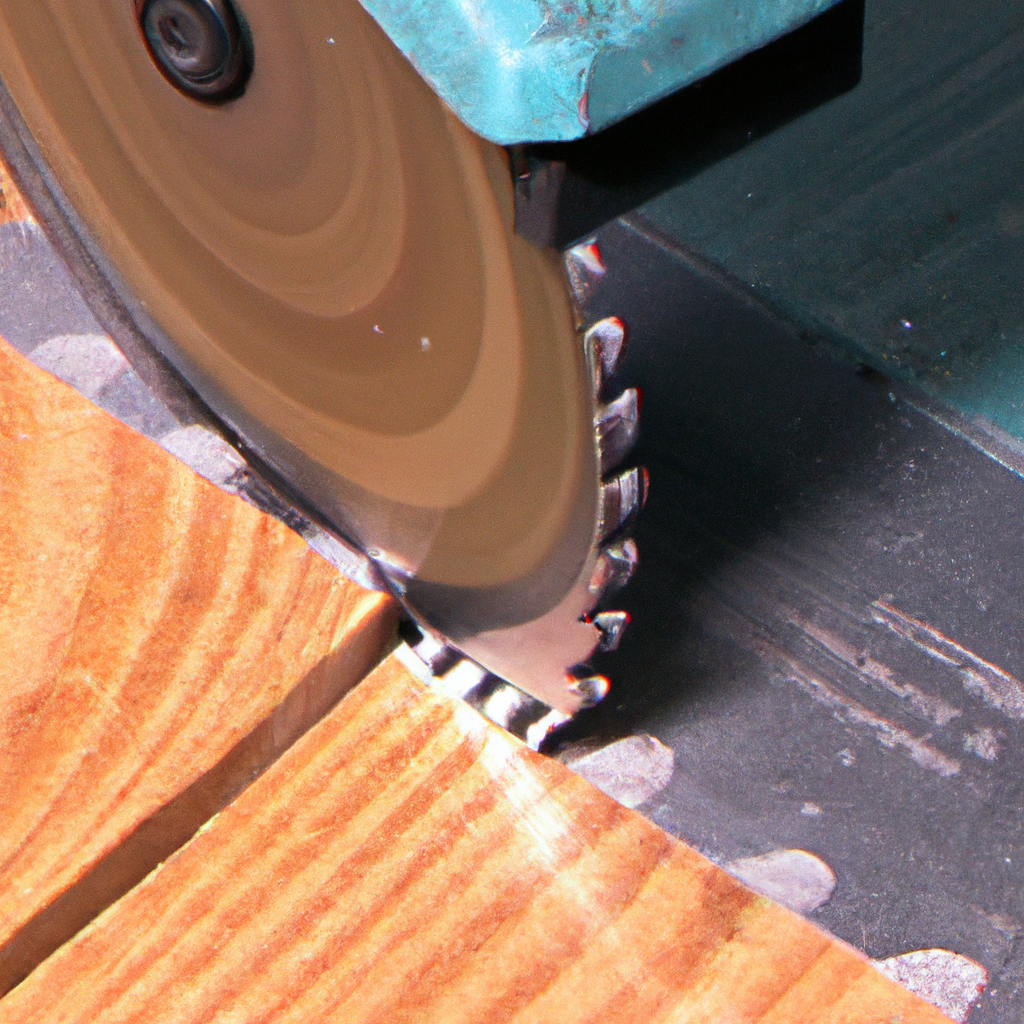Table saws are an essential tool for woodworking enthusiasts and professionals alike, but the question lingers: do you really need a blade guard? This article takes a closer look at the importance of blade guards on table saws and explores the potential risks and benefits associated with their use. Whether you’re a seasoned woodworker or just starting out, understanding the role of a blade guard can help you make an informed decision to ensure your safety and productivity in the workshop. So, let’s dive into the world of table saws and blade guards to unveil whether they’re truly a necessity or not.

Types of Blade Guards
When it comes to table saws, there are several types of blade guards that you can choose from to enhance safety and reduce the risk of accidents. These blade guards are designed to protect you from potential injuries and shield you from flying debris. Let’s take a closer look at the different types of blade guards available on the market:
Riving Knife
A riving knife is a vertical metal plate that is positioned just behind the cutting blade. Its purpose is to prevent the workpiece from binding and kicking back during the cutting process. Unlike other blade guards, a riving knife moves up and down with the blade, maintaining a consistent distance from it. This ensures that the blade guard offers maximum protection at all times.
Splitter
Similar to a riving knife, a splitter is also designed to prevent kickback and keep the workpiece aligned with the blade. However, unlike a riving knife, a splitter does not move up and down with the blade. It is a stationary component that remains in a fixed position behind the blade. Some splitters may feature anti-kickback pawls for added protection.
Anti-Kickback Pawls
Anti-kickback pawls are small, tooth-like attachments that are connected to the splitter or riving knife. Their purpose is to prevent the workpiece from lifting or getting thrown back towards the user. These pawls engage with the workpiece and provide resistance, reducing the chance of kickback. They are particularly useful when working with larger and heavier materials that have a higher risk of kickback.
Benefits of Using a Blade Guard
Using a blade guard on your table saw offers several benefits that cannot be ignored. Investing in the proper safety equipment can go a long way in preventing accidents and ensuring a safe working environment. Here are some of the key benefits of using a blade guard:
Enhanced Safety
The primary benefit of using a blade guard is enhanced safety. Blade guards act as a physical barrier between you and the spinning blade, reducing the risk of accidental contact. They provide an added layer of protection, especially when working with challenging materials or performing intricate cuts. By using a blade guard, you can significantly minimize the chance of injuries and potential accidents.
Reduced Risk of Accidents
Table saws can be dangerous tools if not handled properly. By using a blade guard, you can reduce the risk of accidents significantly. Blade guards help prevent kickback, which is a common cause of accidents. Additionally, they also protect your hands and fingers from the blade’s cutting action, reducing the possibility of severe cuts or amputations. The peace of mind that comes with knowing you are working with a reduced risk of accidents is invaluable.
Protection from Flying Debris
When using a table saw, there is always the possibility of flying debris and wood fragments. These can pose a serious risk to your eyes, face, and other exposed body parts. Blade guards provide a physical barrier that helps contain these flying particles, preventing them from reaching you. This protection is crucial, as even a small piece of debris traveling at high speed can cause severe injury. By using a blade guard, you can effectively shield yourself from this risk.

Disadvantages of Using a Blade Guard
While blade guards offer significant safety benefits, there are a few disadvantages to consider as well. It is important to weigh these disadvantages against the benefits before determining whether to use a blade guard. Here are some of the main disadvantages:
Limited Visibility
One of the primary drawbacks of using a blade guard is that it can limit your visibility. The guard can block your view of the cutting area, making it harder to see the blade and the workpiece. This lack of visibility can be a challenge, especially when performing precise cuts that require careful alignment. It is crucial to find a balance between safety and visibility, ensuring that you can still see the cutting action while using a blade guard.
Difficulty in Making Certain Cuts
Depending on the type of cuts you need to make, a blade guard can sometimes make the process more challenging. For example, when making bevel cuts or certain intricate designs, the guard may interfere with the movement of the workpiece or the positioning of the saw. In these situations, you may find it necessary to remove the blade guard temporarily to achieve the desired results. However, always remember to prioritize safety and only remove the guard when absolutely necessary.
Possible Interference with Workpieces
In some cases, a blade guard can interfere with larger or irregularly shaped workpieces. The guard may come into contact with the workpiece, causing it to bind or preventing it from moving smoothly through the blade. This can be frustrating and may require additional adjustments or modifications to accommodate the blade guard. It’s important to consider the size and nature of your workpieces and ensure that the blade guard will not hinder their movement before proceeding.
Legal Requirements
In addition to considering the safety benefits and disadvantages, it is essential to be aware of the legal requirements surrounding the use of blade guards on table saws. Failure to comply with these regulations can result in fines or other legal consequences. Here are two key areas to consider:
OSHA Regulations
The Occupational Safety and Health Administration (OSHA) sets specific regulations and standards to ensure workplace safety. While OSHA does not explicitly require the use of blade guards on table saws, it does require employers to provide a safe working environment. If using a blade guard is the industry standard or recommended for your specific line of work, not utilizing one may be considered a violation of OSHA regulations. Always check the relevant OSHA guidelines for your profession to ensure compliance.
State and Local Laws
Apart from OSHA regulations, certain states or local authorities may have their own specific laws regarding the use of blade guards on table saws. These laws may vary from one jurisdiction to another, so it is important to familiarize yourself with the regulations in your area. Consulting with local safety experts or legal professionals can provide valuable insights on any legal requirements you need to adhere to.

Safety Considerations
To maximize the effectiveness of blade guards and ensure a safe working environment, there are several safety considerations to keep in mind. By following these guidelines, you can minimize the risk of accidents and maintain a high level of safety when using a table saw.
Proper Installation
Proper installation of the blade guard is crucial for its effectiveness. Follow the manufacturer’s instructions carefully and ensure that the guard is securely attached to the table saw. Loose or improperly installed guards can pose a significant safety hazard, as they may become dislodged during operation. Take the time to familiarize yourself with the installation process and perform regular checks to ensure that the guard remains in place.
Regular Maintenance
Blade guards, like any other piece of equipment, require regular maintenance to function optimally. Check the guard regularly for signs of wear or damage. Replace any worn-out components promptly, and always keep the guard clean and free from debris. Regular maintenance not only prolongs the lifespan of the guard but also ensures that it continues to provide the necessary level of protection.
Proper Usage
Using the blade guard correctly is essential for your safety. Always follow the recommended operating procedures and guidelines provided by the manufacturer. Keep your hands and fingers away from the blade at all times, and never attempt to bypass or disable the guard. Remember that the guard is designed to protect you and should be treated as an integral part of the table saw’s safety features.
Factors to Consider
Before deciding whether to use a blade guard on your table saw, there are several factors to consider. These factors can help guide your decision-making process and ensure that you choose the best option for your specific needs.
Skill and Experience
Your skill level and experience with table saws play a significant role in determining whether you need a blade guard. If you are a beginner or not entirely confident in your abilities, using a blade guard can provide an added level of safety. However, as you gain experience and develop better control over the saw, you may feel more comfortable and choose to work without a guard. Assess your skill level honestly and make a decision that aligns with your confidence and capabilities.
Types of Materials
Different materials require different cutting techniques and safety precautions. Some materials may be more challenging to work with, increasing the risk of accidents. For example, working with hardwoods or metal may pose a greater threat than cutting softwood. Take into account the types of materials you commonly work with and evaluate the potential risks involved before deciding whether to use a blade guard.
Types of Cuts
The type of cuts you regularly perform on your table saw is another important factor to consider. Some cuts may be more suited to using a blade guard, while others may require its removal. For straight cuts or simple crosscuts, a blade guard can provide sufficient protection. However, when making bevel cuts, dado cuts, or intricate designs, the guard may hinder your ability to maneuver the workpiece accurately. Evaluate the nature of your cutting tasks and choose the option that best suits your needs.

Benefits of Removing the Blade Guard
While it is generally recommended to use a blade guard for safety reasons, there are situations where removing the guard can offer certain benefits. It is important, however, to carefully weigh these benefits against the associated risks to ensure that the decision is made with proper consideration. Here are some potential benefits of removing the blade guard:
Improved Visibility
Removing the blade guard can significantly improve visibility, especially when performing intricate cuts or when precise alignment is necessary. With the guard out of the way, you have a clear view of the cutting action, allowing for better control and accuracy. This improved visibility can be particularly useful for experienced users who have developed a good understanding of the table saw’s capabilities and potential risks.
Increased Maneuverability
Certain types of cuts or workpieces may require increased maneuverability, which can be compromised by the presence of a blade guard. Removing the guard can allow for more freedom of movement, making it easier to navigate complex or irregularly shaped materials. However, it is crucial to maintain proper safety precautions and exercise caution when working without a guard in order to minimize the associated risks.
Longer Blade Life
When a blade guard is in use, it can come into contact with the cutting blade, causing wear and tear over time. Removing the guard eliminates the possibility of friction between the guard and the blade, potentially extending the lifespan of the blade. However, it is important to note that the increase in blade life should not be the sole determining factor when deciding to remove the guard, as safety considerations should always take precedence.
Risks of Removing the Blade Guard
While removing the blade guard may offer certain benefits, it is crucial to be aware of the potential risks involved. These risks can pose serious safety concerns and should not be overlooked. Here are some of the main risks associated with removing the blade guard:
Increased Risk of Accidents
Removing the blade guard significantly increases the risk of accidents. Without the guard in place, there is no physical barrier between you and the spinning blade. Accidental contact with the blade can lead to severe injuries, including lacerations, amputations, and even death. It is important to prioritize safety over convenience and only remove the blade guard when absolutely necessary.
Greater Exposure to Debris and Sawdust
When the blade guard is removed, there is a higher chance of debris and sawdust becoming airborne. These particles can pose a serious risk to your health, especially if inhaled or if they come into contact with your eyes or skin. The use of personal protective equipment, such as safety glasses and a dust mask, becomes even more crucial when working without a blade guard to minimize exposure to these hazardous materials.
Potential Legal Consequences
In certain jurisdictions or professional settings, removing the blade guard may have legal consequences. Local regulations or industry standards may require the use of a blade guard as a mandatory safety measure. Failure to comply with these regulations can result in fines, penalties, or even the loss of licenses or certifications. Always understand and adhere to the legal requirements specific to your location and profession.

Alternatives to Blade Guard
If using a blade guard poses challenges or concerns, there are several alternatives that can help enhance safety and reduce the risk of accidents. These alternatives can be used in conjunction with or as alternatives to the blade guard, providing additional protection and ensuring a safe working environment.
Usage of Push Sticks
Push sticks are sturdy handheld tools that are used to guide the workpiece through the blade while keeping your hands at a safe distance. They provide increased control and minimize the risk of accidental contact with the blade. Push sticks are particularly useful when working with smaller or narrower pieces that may be challenging to maneuver with your hands alone.
Usage of Featherboards
Featherboards are devices that help hold the workpiece against the table and fence, ensuring stability and preventing kickback. They are designed to apply pressure in the direction of the feed, keeping the workpiece firmly in place. By using featherboards, you can enhance control and reduce the chance of the workpiece shifting or lifting during cutting.
Employment of Outfeed Tables
Outfeed tables are extensions attached to the table saw, offering additional support for larger workpieces. These tables help maintain a balanced and secure cutting environment, preventing the workpiece from tipping or becoming unstable during the cutting process. By using an outfeed table, you can improve safety and reduce the risk of accidents, especially when working with heavy or cumbersome materials.
Conclusion
In conclusion, while the use of a blade guard on a table saw is not always mandatory, it is highly recommended for enhanced safety. Blade guards offer significant benefits, such as enhanced safety, reduced risk of accidents, and protection from flying debris. However, there are also a few disadvantages to consider, such as limited visibility and difficulty in certain cuts. It is crucial to weigh the advantages and disadvantages and make an informed decision based on your skill level, the types of cuts and materials you work with, and any legal requirements that may apply in your jurisdiction. If using a blade guard presents challenges, there are alternative safety measures you can consider, such as push sticks, featherboards, and outfeed tables. Regardless of your decision, prioritize safety at all times and use the necessary precautions to ensure a safe and accident-free working environment.

